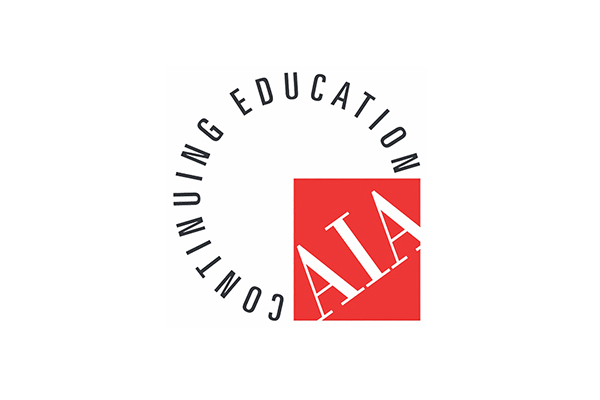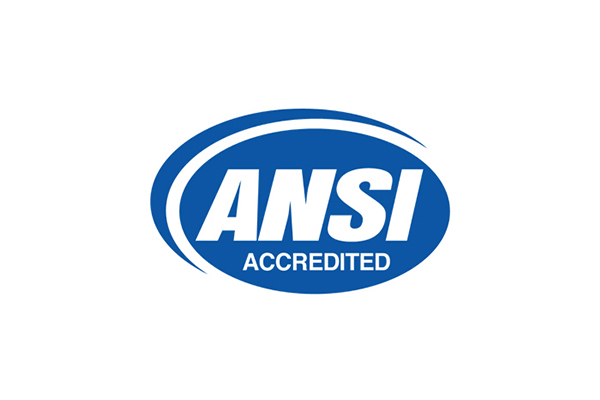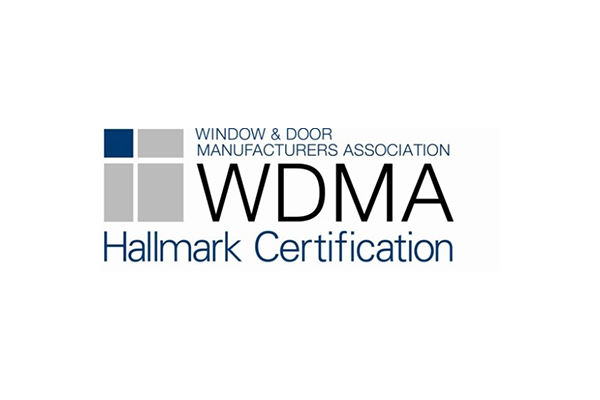|
|
||||||||||||||||||||||||||||||||||||||||||||||||||||||||||||||||||||||||||||||||||||||||||||||||||||||||||||||||||||||||||||||||||||||||||||||||||||||||||||||||||||||||||||||||||||||||||||||||||||||||||||||||||||||||||||||||||||||||||||||||||||||||||
|
INTERPRETATION NUMBER |
WDMA or JDMG APPROVAL DATE |
SUBJECT |
REFERENCE STANDARD |
AAMA NUMBER |
|
|
11/9/15 |
Folding Doors |
101/I.S.2/A440-11 |
|
|
|
11/9/15 |
Water Percolation |
101/I.S.2/A440-11 101/I.S.2/A440-08 |
|
|
|
7/30/15 |
Test Unit Installation |
101/I.S.2/A440-11 101/I.S.2/A440-08 101/I.S.2/A440-05 |
|
|
10/4/11 |
Distributed Load Test |
101/I.S.2/A440-08 101/I.S.2/A440-05 |
||
|
10/4/11 |
Fixed Door Forced Entry Resistance Testing |
101/I.S.2/A440-08 |
||
|
2/26/10 |
Oriel Windows |
101/I.S.2/A440-08 |
||
|
9/1/09 |
Test Specimen Mounting Arrangement for TDDs |
101/I.S.2/A440-08 |
||
|
3/18/08 |
Sash / Leaf Torsion Test |
101/I.S.2/A440-05 |
||
|
2/27/08 |
Locking of Side-Hinged Entry Doors for Air & Water Testing |
101/I.S.2/A440-05 |
||
|
12/18/08 |
Definition of Permanent Damage |
101/I.S.2/A440-05 |
||
|
10/10/07 |
Clarification to JDMG TI-06-04 |
101/I.S.2/A440-05 |
||
|
12/18/08 |
Casement, Awning, Hopper & Projected Window Hardware |
101/I.S.2/A440-05 |
||
|
10/10/07 |
Maximum Allowable Air Leakage |
101/I.S.2/A440-05 |
||
|
11/20/06 |
Side Hinged Door Qualification |
101/I.S.2/A440-05 |
||
|
10/12/06 |
Optional Performance Grade |
101/I.S.2/A440-05 |
||
|
11/20/06 |
Hardware Load Test |
101/I.S.2/A440-05 |
||
|
8/9/05 |
Deflection Measurement |
101/I.S.2/A440-05 101/I.S.2/NAFS-02 101/I.S.2-97 |
65 |
|
|
5/07 |
Deflection Clarification |
101/I.S.2/A440-05 101/I.S.2/NAFS-02 101/I.S.2-97 |
67 |
|
|
8/03 |
Fiberglass Sills |
101/I.S.2/NAFS-02 101/I.S.2-97 |
66 |
|
|
8/03 |
Auxiliary Tests |
101/I.S.2/NAFS-02 101/I.S.2-97 |
63 |
|
|
10/98 |
Passive Ventilators |
101/I.S.2-97 |
60 |
|
|
4/30/07 |
Oriel Single Hung Window (formerly WDMA TI-98-4) |
101/I.S.2-97 |
59 |
|
|
10/98 |
Sash Torsion Test |
101/I.S.2-97 |
58 |
|
|
10/98 |
Life Cycle Testing of Dual Windows |
101/I.S.2-97 |
57 |
|
|
10/98 |
Base Test Unit |
101/I.S.2-97 |
56 |
|
|
10/97 |
Summer Mode Sash Position |
101/I.S.2-97 |
55 |
|
|
10/97 |
Test Specimen Configuration |
101/I.S.2-97 |
54 |
|
|
10/97 |
SGD Structural Testing |
101/I.S.2-97 |
53 |
|
|
2/08 |
Reinforcement/Anti-Bow Devices (formerly WDMA TI 97-14) |
101/I.S.2-97 |
52 |
|
|
10/97 |
Greenhouse Dead Load Testing |
101/I.S.2-97 |
51 |
|
|
10-97 |
True Divided Light Definition |
101/I.S.2-97 |
47 |
|
|
10/97 |
Dual Window Definition |
101/I.S.2-97 |
45 |
|
|
10/97 |
Greenhouse Dead Load Test |
101/I.S.2-97 |
36 |
|
|
10/97 |
Deglazing Test/Variations |
101/I.S.2-97 |
35 |
|
|
10/97 |
Fixed Window Definition |
101/I.S.2-97 |
33 |
|
|
10/97 |
Operating Force Loads |
101/I.S.2-97 |
31 |
|
|
10/97 |
Storm Locks for FER |
101/I.S.2-97 |
26 |
|
|
10/97 |
Safety Drop Latches |
101/I.S.2-97 |
25 |
|
|
5/07 |
Number of Weep Holes |
101/I.S.2-97 |
22 |
|
|
8/03 |
Number of Locks Tested |
101/I.S.2-97 |
18 |
|
|
5/07 |
Guide Buttons |
101/I.S.2-97 |
17 |
|
|
3/08 |
Permanent Deformation |
101/I.S.2-97 |
4 |
|
Pending |
||||
|
INTERPRETATION NUMBER |
JDMG STATUS |
SUBJECT |
REFERENCE STANDARD |
|
|
Withdrawn |
||||
|
INTERPRETATION NUMBER |
WDMA |
SUBJECT |
REFERENCE STANDARD |
AAMA NUMBER |
|
WDMA TI 02-03 |
WITHDRAWN in favor of |
Uniform Load Deflection |
01/I.S.2/NAFS-02 101/I.S.2-97 |
65 |
|
WDMA TI 02-02 |
WITHDRAWN |
Hinged Glass Doors |
101/I.S.2-97 |
64 |
WDMA issues Technical Bulletins to address relevant issues related to standards or technical matters of concern to WDMA members. Technical Bulletins are intended to explain or expand upon the use of products covered by WDMA standards, or standards or codes developed by other organizations. WDMA Technical Bulletins undergo formal review and approval following procedures established by the WDMA Technical Committee Handbook and may also be issued jointly in cooperation with other sponsoring organizations.
Below is a list of current WDMA Technical Bulletins and a brief introduction:
AAMA/WDMA TB24-01: Understanding Window Opening Control Devices (WOCDs) – This document is intended to clarify the definition of a Window Opening Control Device (WOCD), to promote greater understanding of the role of WOCDs and provide an understanding of a WOCD’s function. The bulletin is derived from the requirements outlined in ASTM F2090, Standard Specification for Window Fall Prevention Devices with Emergency Escape (Egress) Release Mechanisms.
AAMA/WDMA TB-23-02: NAFS Equivalency Bulletin – This is the Technical Equivalency Bulletin to the 2011, 2017, and 2022 editions of AAMA/WDMA/CSA 101/I.S.2/A440, NAFS - North American Fenestration Standard/Specification for windows, doors, and skylights. This equivalency bulletin, AAMA/WDMA TB-23-02 is issued to provide guidance for the equivalent comparison between the previous versions of NAFS noted above.
Equivalency of Editions of ASTM –As the Sponsor of the Hallmark Certification Program, WDMA has conducted a side-by-side comparison of the testing and specification differences between the 2008, 2009, 2012, 2012a, 2014 and 2017 editions of ASTM E 1996, and the testing difference between the 2004, 2005 and 2013a editions of ASTM E1886.
Equivalency of Editions of NAFS 2017 – In 2014, AAMA, WDMA and CSA issued an equivalency memo outlining the comparison of the testing and specification differences between the 2005, 2008 and 2011 editions of the North American Fenestration Standard/Specification for window, doors and skylights. This is an addendum to the previous Bulletin (14-01) and builds upon the previous declaration of equivalency between various editions of the NAFS Document.
NAFS I.S.4 Requirement for Exterior Doors – The WDMA Technical Committee has reviewed an interpretation request from Fenestration Canada regarding the WDMA I.S.4, Industry Specification for Preservative Treatment for Millwork treating requirement as it applies to the wood stiles and rails within flush (i.e. wood, fiberglass, and steel skin and core constructed) exterior doors.
Relating ASCE/SEI 7-10 Design Wind Loads to Fenestration Product Ratings – The American Society of Civil Engineers (ASCE) and the Structural Engineering Institute (SEI) have published the 2010 edition of ASCE/SEI 7, Minimum Design Loads for Buildings and Other Structures. This updated standard is approved for reference in the 2012 International Codes and in the 2010 Florida Building Code, replacing the text taken from the previous edition, ASCE/SEI 7‐05.
QSI/WDMA/AWS Comparison Chart (rev5) – Specifiers need to be aware that “Premium Grade” doors under the AWS, WDMA and QSI specifications have face veneer requirements that can significantly affect door costs. QSI Premium doors require wider flitch width than WDMA and AWS Premium doors. Premium doors under WDMA and AWS standard require higher veneer grade than Custom doors. Specifiers and distributors need to be aware of both the physical and cost-related differences between each of the standards and veneer grades when ordering and furnishing Premium doors. Specifiers should use the current/latest edition of the WDMA standard and AWS standards (with errata) in lieu of older WDMA standards or QSI.
LEED® Opportunities for Interior Wood Doors Version 2.2 – The United States Green Building Council (USGBC) has developed a program to promote commercial building design, construction and material use that is sensitive to environmental issues. The program uses the acronym LEED® , which stands for Leadership in Energy and Environmental Design. The program sets guidelines for earning credits that go toward certification for an environmentally sound building upon completion. While the LEED® program addresses many design and construction aspects of a building, this Bulletin’s focus is on interior wood doors.
LEED® Opportunities for Interior Wood Doors v4 & v4.1 – In 1998, the USGBC (United States Green Building Council) developed the first version of LEED® (Leadership in Energy and Environmental Design) a program designed to promote more efficient building designs through efforts that take in consideration materials and construction techniques that reduce the environmental impacts. The current version, LEED® v4 was introduced in 2013 and its’ counterpart LEED® v4.1 was published in June 2019 to provide updates and clarification to LEED® v4.
LEED® Opportunities for Wood & Cladded Wood Windows – The United States Green Building Council (USGBC) has developed a program to promote commercial building design, construction, and material use that is sensitive to environmental issues. The program uses the acronym LEED®, which stands for Leadership in Energy and Environmental Design. The program sets guidelines for earning credits that go toward certification for an environmentally sound building upon completion. While the LEED® program addresses many design and construction aspects of a building, this Bulletin’s focus is on wood & cladded wood windows.
Positive Pressure Fire Doors – In 1997 the International Council of Building Officials (ICBO) approved a change to the Uniform Building Code (UBC) that requires fire doors to be tested under positive pressure instead of neutral pressure. Most recently many code groups across the U.S. have adopted the International Building Code (IBC) which also contains the requirement for positive pressure.






